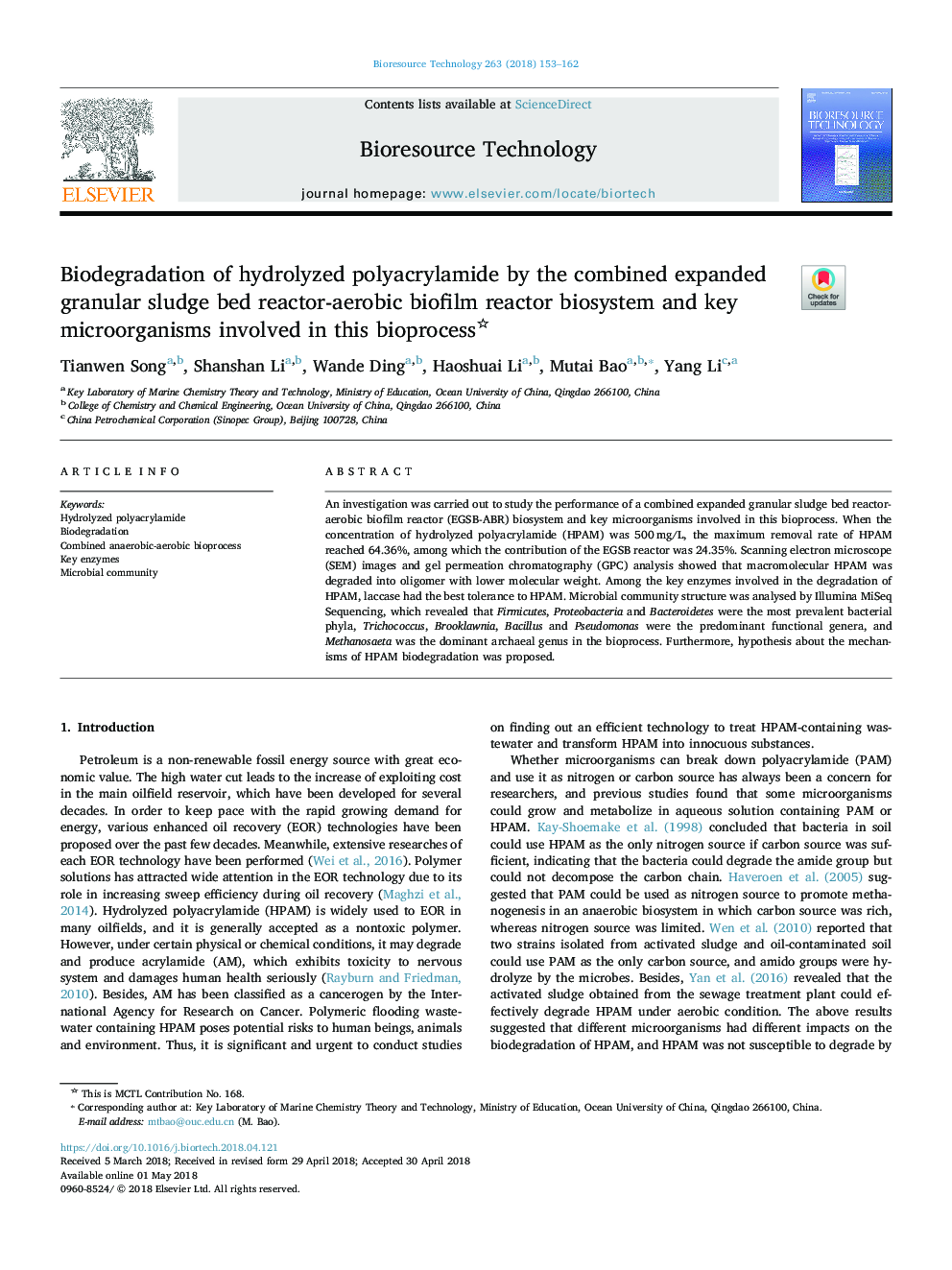| کد مقاله | کد نشریه | سال انتشار | مقاله انگلیسی | نسخه تمام متن |
|---|---|---|---|---|
| 7066554 | 1459880 | 2018 | 10 صفحه PDF | دانلود رایگان |
عنوان انگلیسی مقاله ISI
Biodegradation of hydrolyzed polyacrylamide by the combined expanded granular sludge bed reactor-aerobic biofilm reactor biosystem and key microorganisms involved in this bioprocess
ترجمه فارسی عنوان
تجزیه زیستی از پلی آکریل آمید هیدرولیز شده با ترکیب لجن مخلوط شده لجن گرانول رقیق - بیوفیلم ایروبیک و سیستم بیولوژیک و میکروارگانیسم های کلیدی درگیر در این فرآیند زیستی
دانلود مقاله + سفارش ترجمه
دانلود مقاله ISI انگلیسی
رایگان برای ایرانیان
کلمات کلیدی
پلی آکریل آمید هیدرولیز شده، تجزیه زیستی، ترکیب بی هوازی بی هوازی و بی هوازی، آنزیم های کلیدی، جامعه میکروبی،
موضوعات مرتبط
مهندسی و علوم پایه
مهندسی شیمی
تکنولوژی و شیمی فرآیندی
چکیده انگلیسی
An investigation was carried out to study the performance of a combined expanded granular sludge bed reactor-aerobic biofilm reactor (EGSB-ABR) biosystem and key microorganisms involved in this bioprocess. When the concentration of hydrolyzed polyacrylamide (HPAM) was 500â¯mg/L, the maximum removal rate of HPAM reached 64.36%, among which the contribution of the EGSB reactor was 24.35%. Scanning electron microscope (SEM) images and gel permeation chromatography (GPC) analysis showed that macromolecular HPAM was degraded into oligomer with lower molecular weight. Among the key enzymes involved in the degradation of HPAM, laccase had the best tolerance to HPAM. Microbial community structure was analysed by Illumina MiSeq Sequencing, which revealed that Firmicutes, Proteobacteria and Bacteroidetes were the most prevalent bacterial phyla, Trichococcus, Brooklawnia, Bacillus and Pseudomonas were the predominant functional genera, and Methanosaeta was the dominant archaeal genus in the bioprocess. Furthermore, hypothesis about the mechanisms of HPAM biodegradation was proposed.
ناشر
Database: Elsevier - ScienceDirect (ساینس دایرکت)
Journal: Bioresource Technology - Volume 263, September 2018, Pages 153-162
Journal: Bioresource Technology - Volume 263, September 2018, Pages 153-162
نویسندگان
Tianwen Song, Shanshan Li, Wande Ding, Haoshuai Li, Mutai Bao, Yang Li,
